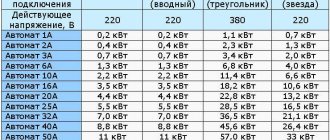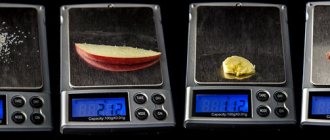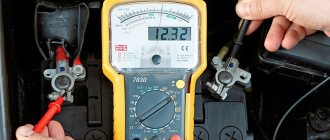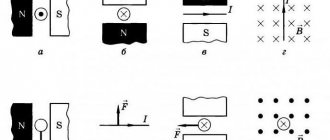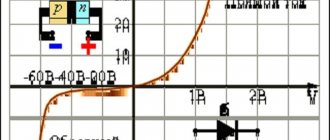Today, most devices operate autonomously using batteries or batteries. Wired ones are gradually becoming a thing of the past. Rechargeable batteries are used in phones, laptops, cars, flashlights and many other devices. The most important technical characteristic of a battery is capacity, which determines the period of time during which the device can power other devices with a fixed ampere load. Today's material discusses how to determine the battery capacity and how it is measured.
Why is capacity measured in ampere hours?
What is "Ampere per hour"? is a unit of measurement of electric charge, the main purpose of which is expressed by the battery capacity. A non-systemic unit can be given a logical explanation.
REFERENCE! One “Ah” is considered to be a charged electron that passes through the area of a metal conductor for one hour when passing a current of 1 Ampere.
That is, theoretically, a fully charged battery with a capacity of 1000 mAh is ready to demonstrate a current of 1 A for 1 hour. If a current of 10 A is required, then the battery will be able to provide it within 0.1 hour. If a current of 0.2 A is needed, the battery will give it out in 5 hours. The logic of translation is clearly visible here.
In small-sized batteries, milliamps per hour are used for ease of calculation. In rare cases, microamps per hour are used. These batteries are used in small devices, mainly electronics.
In reality, the battery capacity is calculated based on a twenty-hour discharge cycle to the “Minimum” value “Umin” - the parameter to which it is better not to bring the rechargeable battery.
Let's look at real examples of what the capacity value means.
How to calculate battery capacity?
(Define, find out)
To calculate we use a simple formula:
- C b – battery capacity, mA*h;
- I n – load current, mA;
- t – operating time, h.
On secondary sources, this value is indicated on the case or packaging as a numerical value. For example: 900 mAh or 550 mAh. The larger the value of this value, the longer the device will operate with a given power source from charge to charge.
For primary power supplies that cannot be recharged, this value is assumed to be:
| Designation (marking) | Battery type | C b, mA*h |
| A.A. | R6, saline (1)LR6, alkaline (2)FR6, lithium (3) | 1100 – 3500 |
| AAA | R03, (1)LR03, (2)FR03, (3) | 540 – 1300 |
| B | LR12, (2) | 8350 |
| C | R14, (1)LR14, (2) | 3800 – 8000 |
| D | R20, (1)LR20, (2) | 8000 – 19500 |
| N | R1, (1)LR1, (2) | 1000 |
| 1/2AA | R14250, (1) | 250 |
| R10 | R10, (1) | 1800 |
The table clearly shows what the capacity of conventional batteries is; this value is not indicated on the case or packaging, like with batteries. But the indicator is very important from the point of view of the duration of operation of an element in a technical device or device.
An example of calculating the output current in a car battery
Cars use heavy batteries with high capacity. For example, the capacity of the 6CT-62N battery is 62 Ah. From this value you can calculate the current that will discharge the device evenly to the final voltage. In a car it is 10.8 V. Measurements are made based on the initial data:
- Capacity – 62 Ah.
- Discharge time – 20 hours.
- Working U – 12 V.
- The final voltage is 10.8 V.
To find out how much current a battery can produce for 20 hours, you should:
62 / 20 = 3.1 A
Additionally, you can convert Ah capacity into a unit of measurement - coulomb. 1 C/s = 1 A, or 1 Ah = 3600 C.
How to find out the capacity of a telephone battery at home
When using a cell phone, its battery is subject to constant degradation. This process cannot be avoided; it is natural. This happens regardless of the model, price, or features of the phone. To accurately understand how long the battery in your device will last, you need to measure its current capacity. This will allow you to replace the battery in time before it starts to turn off at the most inopportune times.
First of all, you need to inspect the battery. Dangerous problems in a lithium battery are immediately visible: the case may swell, be full of traces of corrosion, and greenish and white spots.
If signs of swelling are detected, it is dangerous to continue using such a battery. This can cause short circuits in the phone's electrical circuits. The swelling may begin from a small bulge to serious deformation. Another worrying factor is the rapid loss of charge in the phone.
Today, there are many applications to measure the current capacity of a phone.
To accurately determine the battery capacity, the advanced charger method is used. The battery is completely discharged, then connected to this device. It, in turn, calculates the battery capacity taking into account time and current value.
Conversion to Wh
Battery manufacturers can be conditionally divided into two castes:
- The first indicate the “reserved charge” (in amperes/hours) of the battery.
- The latter write “stored energy” in Wh.
The most interesting thing is that these units of measurement indicate the battery capacity. To measure the most accurate capacity value by converting Wh to Ampere hours, it is necessary to carry out a mathematical calculation using integrals of the instantaneous power that a rechargeable battery produces when discharged.
But if you need to calculate approximately, you can operate with average values of voltage and current used, bringing all the data to the following denominator:
1 W = 1V*1A
If you add time here, you get:
1Wh=1V*1Ah
The decoding of the formula is as follows - the stored energy (watt-hour) with an acceptable error is equal to the product of the charge reserve (Amp hours in the battery) by the voltage (V, average).
E= q* U
Or:
E= q* U*3600
If Watts are converted to J.
Let's return to the example of the battery, which is necessary for the starter. It says that the stored charge is 62 Ah, the operating voltage is 12 V.
Capacity (stored energy) with permissible error is equal to:
62 Ah * 12 V = 744 Wh = 744 Wh * 3600 = 2.678 MJ.
Peukert's Law
For acid batteries, the so-called Peukert's Law applies, which determines the dependence of the available capacity on the current drawn from the cell. Simply put, the more current we consume, the less effective power.
Peukert's Law takes into account the internal resistance and recovery rate of the battery. A value close to one indicates a well-functioning battery with good efficiency and minimal losses; a higher number reflects a less efficient battery. Peukert's law is exponential - readings for lead acid range from 1.3 to 1.5 and increase with age. Temperature also affects the readings. The figure illustrates the available power as a function of amps calculated with different Peukert ratings.
For example, a 120Ah lead-acid battery discharged at 15A should last 8 hours (120Ah divided by 15A). The inefficiency caused by the Peukert effect reduces the discharge time. To calculate the actual shock duration, divide the time by the Peukert exponent, which in this example is 1.3. As you can see, dividing the discharge time by 1.3 reduces the duration from 8 to 6.15 hours.
And in continuation of the topic, another interesting article on the issue of the correct choice of charging voltage for car batteries and the possibility of using available power supplies for this.
Battery use
There are many types of batteries that are used in various gadgets, areas and systems:
- In the energy sector, telecommunications equipment substations, and stationary lead batteries are used as an emergency power source for railway crossings.
- Nickel-cadmium batteries are used to power mining hoists, communications equipment, and to start diesel stations and aviation engines.
- Nickel-metal hydride batteries are used for autonomous power supply of portable devices.
- Portable devices such as mobile phones, speakers, cameras are powered by Li-ion batteries.
- Some portable gadgets may be equipped with lithium polymer batteries. They are usually positioned with increased safety and increased service life compared to Li-ion.
For several decades in a row, Li-ion batteries have been considered the best for small devices due to fast charging, higher capacity relative to size, lighter weight and longer service life.
How to quickly check the capacity of any battery
Most often, battery capacity is measured using a tester. This is a device for quick measurements. It works automatically and does not require any additional knowledge to use it. The time required is no more than 15 seconds. All that is required is to connect the tester to a power source and press a single button, after which it begins to determine the capacity of the connected batteries.
It is used when choosing a battery, comparing the residual and nominal capacity, which is officially indicated on the device. If the difference is more than 50%, then the battery cannot be used.
What happens during operation?
Unfortunately, over time, all rechargeable batteries go through chemical aging processes. As a result, the capacity gradually decreases, which leads to the need for frequent charging. In addition to this process, the maximum instantaneous performance of the battery (also called peak performance) may decrease.
For a device with a rechargeable battery to operate correctly, all electrically dependent components must have immediate access to power.
The main factor influencing the instantaneous transfer of charge to a battery is its total resistance. If it is high, then the rechargeable battery will not always be able to deliver the charge required for high-quality operation of the device. Because of this, it may not start or stop working. The battery impedance may increase:
- On a permanent basis during chemical aging.
- Short term when battery level is low.
- Temporarily at low and negative air temperatures.
If the minimum voltage threshold for battery operation is exceeded by increasing the resistance (that is, the amount of mAh supplied becomes smaller), the autonomous operation of the device will not be able to be maintained.
How to measure capacitance?
For example, you can take any battery or device; a cell phone is good. Using a tester, we will measure the load current. Next, you need to completely discharge the battery and put it on charge. Measure the time until it is fully charged, calculate using the formula:
If the consumption current is 1.15 A or 1150 mA, the charging time is 3 hours, then in the end we get:
C b = 1150*3 = 3450 mAh.
How to measure battery capacity with a multimeter?
It is actually impossible to measure the value of C b in numerical terms with a multimeter. However, you can measure one indicator, in this case, the load current I n and substituting in the formula - I n * t, after charging the battery for a certain period of time - t, calculate the value of C b.
How to increase battery capacity?
In order to increase this value, you need to know what the battery capacity depends on:
- Element type - saline, alkaline or lithium.
- Temperature operating conditions - some batteries (salt) are not designed for negative temperatures, others (lithium) work better in cold weather. Overheating also negatively affects the performance of power supplies.
- The integrity of the cell body - deformation negatively affects the chemical reaction inside the device; depressurization and leakage of electrolyte makes it completely unsuitable.
There is a way to increase the capacity of a battery, such as a rechargeable battery. To do this, you need to “swing” it, that is, completely discharge it and charge it again. Do this several times.
You can use the “folk” method, but it has no scientific evidence. You need to put the battery in the refrigerator freezer overnight. The C b indicator will increase slightly, but, unfortunately, there will not be a significant increase.
If a device (tablet, phone) has the ability to turn on an economy mode or save energy consumption, then it can be turned on, thereby reducing the load, increasing the operating time, and, as it were, increasing the capacity of the power source.


